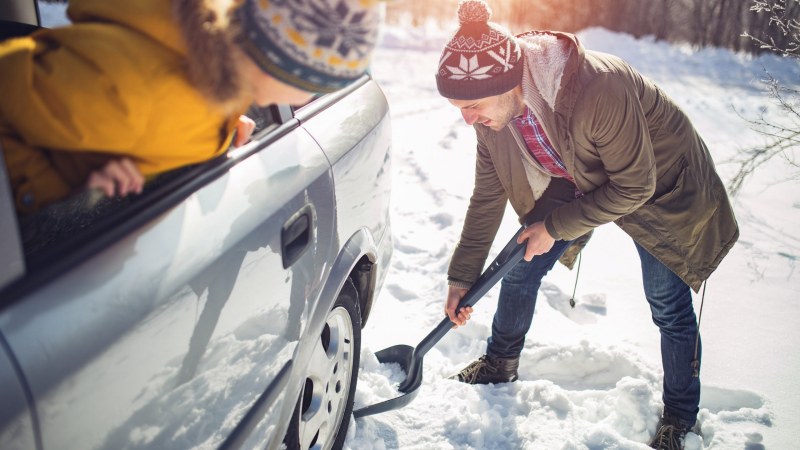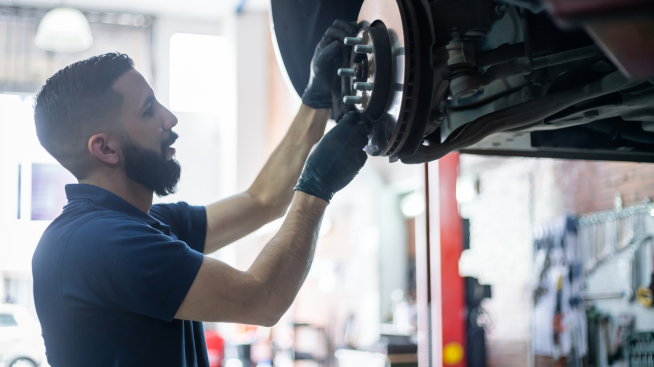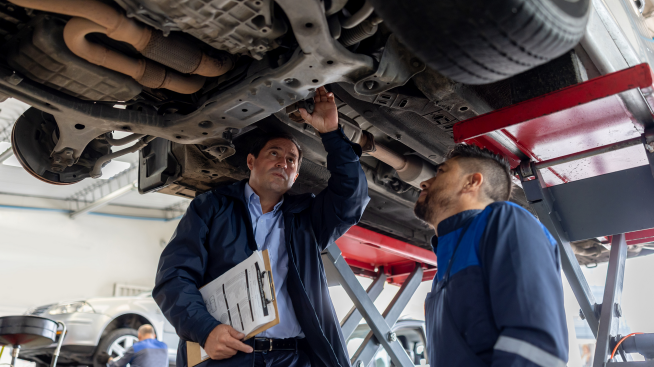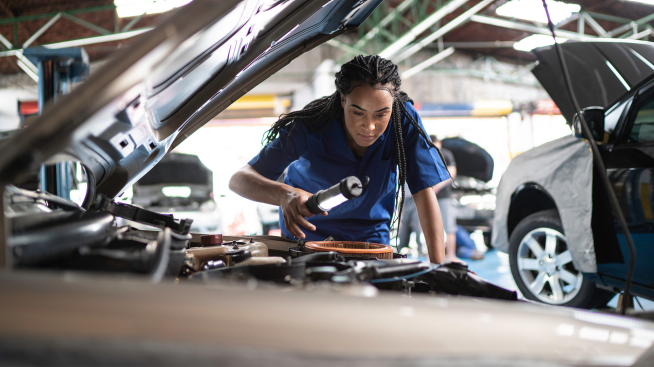How to winterize your car

Winter weather conditions can wreak havoc on your vehicle. Ice, dirt and snowmelt on the roads can damage your vehicle's exterior if left unaddressed. At the same time, cold temperatures can zap your car's battery and affect your tire pressure. If you live in an area that gets a lot of snow and ice during the winter, you may also want to be wary of the increased risk of accidents while on the road. For all these reasons and more, it is a good idea to winterize your car well in advance of the winter season. Below, we discuss our top extreme cold weather car tips to help you make the most of this season.
Cold weather car tips
Check your battery
A drop in temperature can quickly zap your battery, making it more difficult, if not impossible, to start your car. If you are already experiencing difficulties with your battery, it may be a good idea to have it tested at an auto parts store or repair shop, and potentially replaced, before winter hits.
Switch to snow tires
Snow tires are a good idea for drivers who face roads that are consistently covered with snow or ice. While four-wheel-drive vehicles naturally handle these conditions well, snow tires come with special tread patterns and rubber compounds that afford even more traction and stability on the road. These benefits directly translate to a safer driving experience in the winter as you are less likely to slide with a set of winter tires equipped.
If your area experiences more mild winters, all-season tires may be a better choice for your vehicle. On the other hand, if your area is prone to intense winters, you may want to opt for snow tires or even tire chains that provide more control.
Check your tire pressure
As a rule-of-thumb, for every 10 degrees Fahrenheit that the temperature drops, your tire pressure may drop 1 psi. This means that when a winter storm hits, your tire pressure may fall significantly. When this happens, more of your tire's surface area contacts the pavement, causing the tires to overheat. Left unaddressed, your tires are prone to premature wear, tread separation or even blowouts. For this reason, it's important to check your tire pressure often in the winter and refill your tires as necessary.
Check your windshield wipers and fluid
To best prepare for winter flurries and the residual debris left on the road in their wake, consider your overall visibility this winter. Although windshield wipers are ideal for promoting visibility, an old or defective set may end up causing even more difficulty seeing the road in a winter storm. If your wiper blades are showing signs of cracking, stiffness, or are scratching or leaving streaks on your windshield, replace them with a fresh set.
At the same time, try to avoid using your wipers if your windshield is covered in ice or snow, as this may unnecessarily damage them or overwork the motor. Instead, you can direct warm air from your defroster at your windshield and use a snow brush or ice scraper to remove snow and ice, thus letting your wipers handle only minor water droplets or soft snow as it falls.
When driving in the winter, you may experience a lot of residual dirt, mud and salt being splattered across your windshield. This means you could be using your windshield wipers and fluid a lot over the winter season. For this reason, it's a good idea to stock up on windshield wiper fluid and to top off your vehicle's reservoir as the need arises. Wiper fluid that contains an antifreeze agent is ideal for the winter months, while water should be avoided as it can freeze and crack your windshield.
Winter emergency prep
Cold temperatures and difficult driving conditions increase the likelihood of accidents in the winter. For this reason, it is a good idea to routinely prep for winter emergencies, starting with your vehicle. Start by getting any routine maintenance done in advance of the coming winter months to avoid an accident that could leave you stranded in the cold. You should also try to keep your gas tank full. This can not only reduce condensation and prevent gas line freeze-ups, but it can keep you warm longer if you happen to get into an accident.
You may want to consider putting together a winter emergency kit to keep in your vehicle. Some helpful items to pack include jumper cables, a tire pressure gauge, a tire inflator, a tire patch kit, blankets, a first aid kit, a flashlight and a phone charger.
Address your car's exterior
Dirt and salt kicked up from the roads in the winter can damage your vehicle's exterior by causing tarnish or rust. To prevent this, it's a good idea to apply a fresh coat of wax to your vehicle well in advance of the winter months. When winter does roll around, try to wash your vehicle often to remove the salt and debris that may build up on your car's exterior. Remember to wash the underside of your vehicle as well, as leaving it unaddressed may eventually lead to corrosion.
How much does it cost to winterize your car?
Now that you know how to winterize a car, let's talk cost. You can expect the total cost to winterize your car to depend on its year, make, model and condition. For starters, you may be able to get your car's battery tested for free at an auto parts or repair shop. However, if you end up needing to replace the battery, this could incur a significant additional cost depending on the type of battery you need.
The price of suitable snow tires, tire installation and tire chains may end up being the highest-cost items when it comes to winterization. Fortunately, things like refilling your tires with air, washing or waxing your vehicle and replacing windshield wipers and fluid are all relatively low-cost. Putting together an emergency kit is also proportionately inexpensive, as you only need to purchase these items once, restocking only as necessary, and inexpensive options are readily available. Although these minor adjustments are relatively cheap, they can go a long way for taking care of a car in cold weather.



